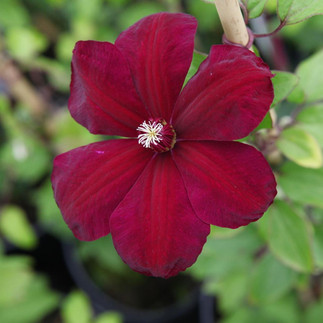Take the Complicated out of Clematis Pruning
- eleanoroborne

- Feb 15, 2023
- 3 min read
I’ve been looking with a critical eye at my Clematis ‘Bill Mackenzie’ for a few weeks now. A beautiful variety which produces masses of orangey yellow lantern-shaped flowers from late summer to early autumn, followed by very ornamental tufty white seed heads which remain on the plant and look incredible and sparkly when lightly frosted. The flowers and seed heads often overlap later in the season, which extends the season of interest. It’s a deciduous climber, losing its leaves in the winter, but for much of the year the delicate finely cut leaves are another attractive string to its bow. It romps over a side of my potting shed, providing plenty of nesting places and habitat for wildlife before tangling itself up into a nearby silver birch tree in a very unruly manner.

This particular clematis is, as you might have guessed, a Group 3 late flowering variety. These clematis bloom on this year’s growth, which means that I need to tackle its currently overenthusiastic spread now, in late winter, before it’s had a chance to wake up and put on its spring growth. This group of clematis requires a ‘hard prune’, taking it back to a pair of strong buds about 30cm above the ground. This may seem drastic, but they can put on an enormous amount of growth throughout the growing season and doing this ensures the flowers will be at eye height in a few months time, rather than on top of the shed and out of view. Other popular clematises in this group include Clematis viticella varieties such as ‘Emilia Plater’ and ‘Entel’.
The next clematis group we’ll need to prune, also around now, are the Group 2 large-flowered clematis, which give their stunning, often saucer-sized display in the early summer on short growth from the previous year. These get a first prune in late winter/early spring to remove dead or damaged growth and give it a general tidy up whilst it’s still dormant. Prune them lightly, just down to the first healthy bud. If you have the time, it’s worth also deadheading the flowers down to the next bud after the first floral flush, as they will often flower again later in the year. Some of my favourites in this group include Clematis ‘Westerplatte’ and the greeny ‘Guernsey Cream’.
The final, and most numerous of the clematises, are the Group 1 early flowering varieties. The group includes the ubiquitous Clematis montana (and its many cultivars) which appear in many of our gardens due to its fast growth, lovely flowers and unfussy nature. These plants need very little pruning, only enough to tidy up and keep it the size you want, and follow the old saying ‘don’t prune before June’. The flowers grow on shoots grown the previous year, so if you’re heavy handed before then, you’ll risk taking out all the developing flower buds in the bid to tidy things up. Other popular clematises in this group include the species C. armandii, C. cirrhosa, and C. alpina.
If you’re unsure which pruning group your clematis is in, just remember:
Group 1 - spring flowering, ‘don’t prune before June’
Group 2 - large flowers from early summer - give it a light prune in late winter
Group 3 - late summer/autumn flowering - hard prune in late winter

Armed with this knowledge as you now are, time to head off into the garden this weekend with some sharp secateurs to bring those Group 2 and 3 clematises back under control, and then reap the rewards of a stunning display in the months to come.
Happy gardening!
Eleanor & Ishka














Comments